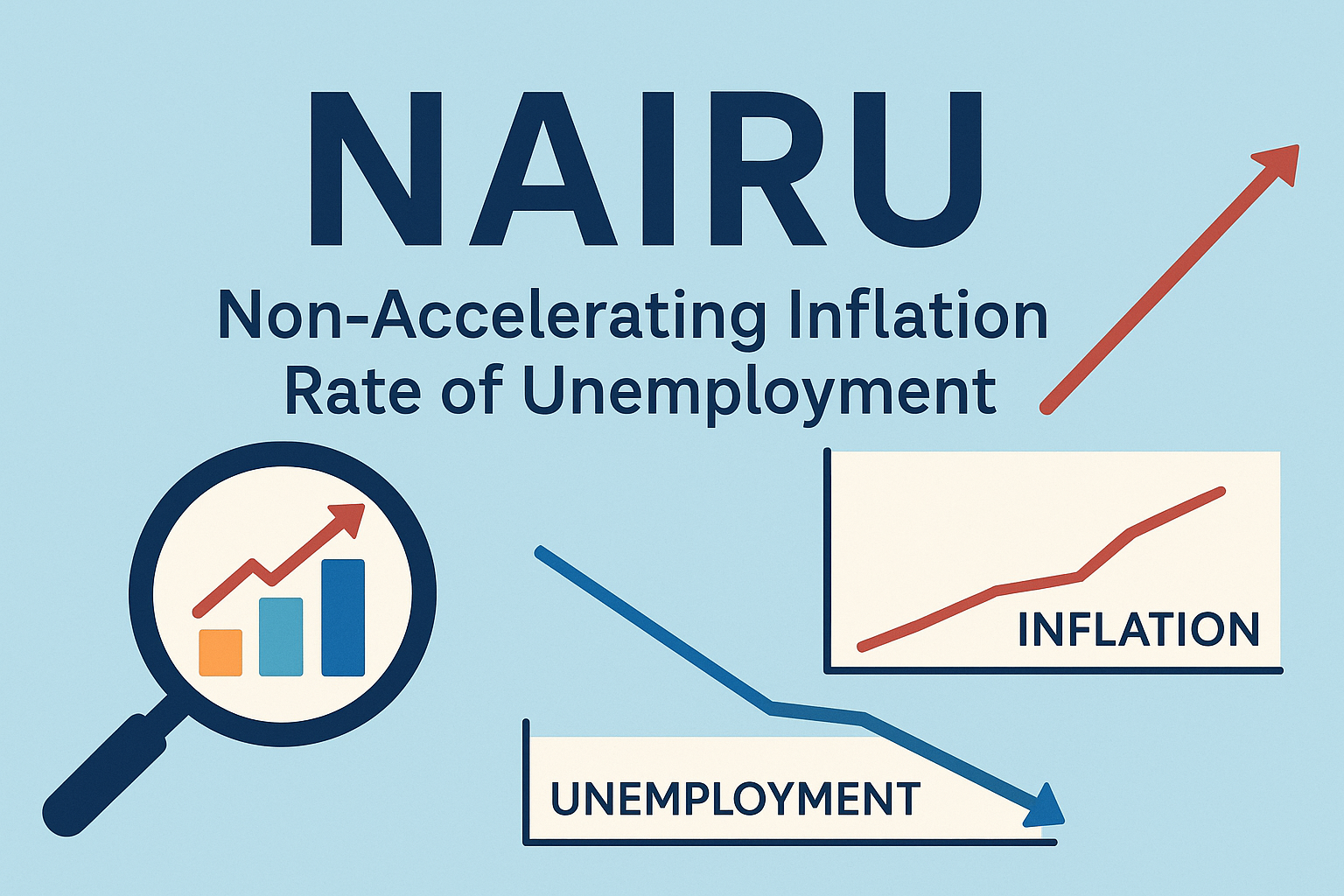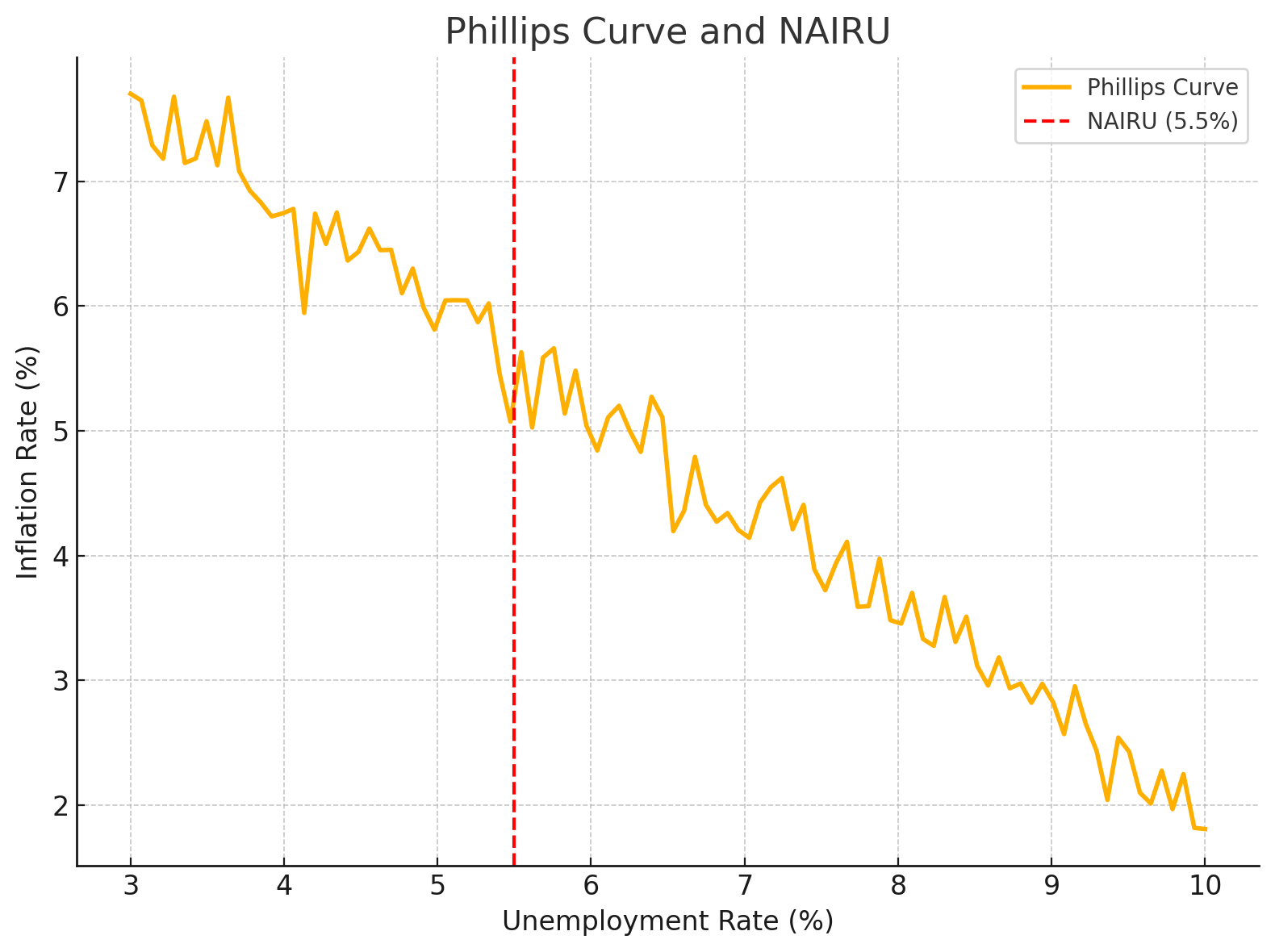

NAIRU, or the Non-Accelerating Inflation Rate of Unemployment, is an economic concept that represents the specific unemployment rate at which inflation remains stable, neither accelerating nor decelerating.
It is a theoretical benchmark where the labor market is in equilibrium, meaning there is neither upward pressure on wages (which fuels inflation) nor downward pressure (which could lead to deflation). NAIRU is closely tied to the idea of the "natural rate of unemployment," but it specifically focuses on the point where inflation is steady.
At NAIRU, which means that at a given rate of unemployment, the labor market has enough space to accomodate more people which prevents excessive wage growth that would drive inflation. Also unemployment is not so high as to create deflationary pressures from reduced consumer spending. Therefore at NAIRU, the economy is operating at a sustainable level without overheating or underperforming. At NAIRU: The economy is in a "Goldilocks" state—unemployment is just right to keep inflation stable, with wages growing in line with productivity and inflation expectations.
Below NAIRU: When unemployment is lower than NAIRU, the labor market becomes tight. Employers compete for fewer workers, driving up wages. Higher wages increase production costs, which businesses pass on to consumers, leading to higher inflation (demand-pull or cost-push inflation).
Above NAIRU: When unemployment exceeds NAIRU, there is excess labor supply. This reduces wage growth, lowers consumer spending, and puts downward pressure on prices, potentially leading to deflation or disinflation.
Demographics: Aging populations or changes in workforce participation (e.g., more women or young workers entering the labor force) can affect NAIRU. For instance, an aging workforce may lower NAIRU due to reduced labor supply.
Labor Market Policies: Minimum wage laws, union strength, or unemployment benefits can influence wage bargaining power and thus NAIRU.
Productivity: Higher productivity growth can reduce NAIRU by allowing wages to rise without increasing unit labor costs.
Globalization and Technology: Automation or global labor competition can alter structural unemployment, impacting NAIRU.
Economic Shocks: Events like oil price spikes (e.g., the Iran-Israel conflict mentioned in your referenced articles) can raise production costs, potentially pushing NAIRU higher as inflation rises independently of unemployment.

The concept of NAIRU is closely tied to the Phillips Curve, which illustrates a trade-off between unemployment and inflation. In the short run, lower unemployment may lead to higher inflation, and vice versa. NAIRU represents the point on the Phillips Curve where inflation is stable, and deviations from NAIRU cause inflation to accelerate or decelerate. However, the Phillips Curve relationship can weaken over time due to factors like anchored inflation expectations or global economic influences, making NAIRU harder to pinpoint.
Central banks, like the Reserve Bank of India (RBI) or the U.S. Federal Reserve, use NAIRU as a guide for monetary policy.
If unemployment falls below NAIRU and inflation rises, central banks may raise interest rates to cool the economy and prevent overheating.
If unemployment is above NAIRU and inflation is low, they may lower rates to stimulate growth and job creation.
However, misjudging NAIRU can lead to policy errors. For example, underestimating NAIRU might cause premature rate hikes, stifling growth, while overestimating it could lead to unchecked inflation.
Comments
Write Comment